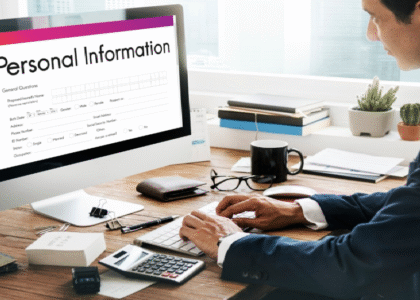The management of libraries in today’s world cannot be regarded as complete without the use of library management software. This software arranges and tracks books, journals, and other resources. But like all good things in life, mere installation of software is not sufficient. To derive maximum benefits from it, certain best practices need to be followed. Such best practices ensure that not only does the software perform its intended functions in an efficient and effective manner, but at the same time, the requirements of the library personnel and users are also met. In the course of reading this article, the reader will be privileged to find out some of the best strategies of using library management software. From the mere born cyclist to the upcoming expert these are the right way to get to the right spot, so get cycling!

ADVERTISEMENT
Understanding Your Library’s Needs
- Identify Your Library’s Specific Requirements
Before implementing library management software, you need to know your specific needs. No two libraries are similar. Some have a good collection of books, while others may rely on digital resources. You need to understand what your library requires in order to pick the appropriate feature of the software. Plus, if your library is rich in a collection of digital materials, then it is better to target the digital resource management feature.
- Involve Your Team
Your library staff knows where the shoe pinches daily. Involve them in the decision-making process. Inquire from them about problems faced while working with the current system. This kind of input will help you select features of the software that will ease their work. It also ensures that the staff is comfortable with the new system for an easy transition.
- Consider Your Users
Think about the people who will be using your library. What do they need? Are they requesting the same kind of books or resources over and over again? Would they want digital copies or physical copies? Understand your users to choose software that meets their needs. If they prefer digital books, make sure the chosen software allows for e-book lending.
ADVERTISEMENT
Improving User Experience
- Ease User Registration
Easy and hassle-free user registration enhances the overall experience of a library user. Ensure that your Library Management Software Company in Punjab has an easy and user-friendly registration system. This shall have both physical and online options for registration. It is supposed to be fast with capture of less information to reduce the load on users.
- Enhance Search Functionality
It is clear that the search is one of the most extensively used components of every library management system. A good search enables a user to locate the resources that they are in search of in the shortest time possible. Ensure your software offers advanced searching, such as by author, title, and subject. The search results need to be as relevant and accurate as possible for users to reach exactly what they are looking for.
- Solicit User Feedback
User feedback is one good option for continuous improvement of your LMS. Encourage user feedback concerning the user experience with the use of the software. Examples of this include surveys, a suggestion box, and online forms. From this feedback, one should know what actually needs improvement and make necessary changes to create a better experience for users.
ADVERTISEMENT
How to Choose the Right Features
- User-Friendly Interface
The user interface is one of the most essential aspects of library management software. A friendly user interface makes using the system more comfortable for both staff and users. When one has to select the software, he has to look for simplicity in design. Because of this, there will be a saving of time and minimization of mistakes. All users have to find their way around without having to fight through complicated menus or commands.
- Integration with Other Systems
If your library uses other systems as well, such as an online payment system or a digital archive, these should be integrated with your library management software. Through integration, it would be easier to share data, and manual entry would be at a minimum. Not only this enhances the time factors, but it also reduces the probabilities of an error.
- Security Features
Security is also among the key concerns when it involves choosing library management software. To be precise, the software should actually ensure that sensitive information such as users’ data and financial records will be well protected. You should look for software with robust security features that will help in data encryption, providing access controls. In this way, only authorized personnel will access sensitive information.
ADVERTISEMENT
How to Implement the Software
- Training Your Staff
Training your staff is the second thing after choosing the right software. However, even if the finest software is selected for the company; unfortunately, it may not be utilised to its optimal capability due to the lack of proper training for the staff. Provide as much in-depth training as possible in all aspects of the software, such as cataloging books, working with user accounts, and creating reports. This should be a hands-on kind of training where the staff practices using the software in real-life scenarios.
- Provide Ongoing Support
Training is not to be a one-time event. For long-term sustainability, ongoing support is very crucial. Let your staff know where to go in case they have problems. It could be through a helpdesk, online resources, or regular refresher courses. Ongoing support helps the staff stay updated on new features and best practices.
- Start with a Pilot Program
Consider implementing a pilot program before a full-scale implementation of the software in the entire library. The pilot program would let you test the software on a small pool of users. This may allow you to catch a few issues before a full rollout and would also provide an opportunity to receive feedback and make certain adjustments if required.
ADVERTISEMENT
Full Efficiency of Software
- Software Update Regularly
When it comes to efficiency, software updates are the lifeblood of your library management system. It adds new features, fixes security patches, and bug problems. On a routine basis, updating this software assures that the application is secure and always smoother. Schedule a regular time when you can check for updates and install them instantly once available.
- Backup Your Data
Data is among the most prized possessions of any library. The loss of data can be an absolute disaster. It is therefore advisable to, on a regular basis, back up data concerning your library. Most Library Management Software Company in Punjab provide the provision of using automatic backups. In addition, backup locations should be kept in a safe place, periodically tested for, and scanned regarding restorability.
- Optimize Resource Management
Library management software can streamline your operations and let you optimize your resources better. Use the reporting feature of the software, and keep a track on different resources. This can help you make better purchasing decisions about books or resources. For instance, if there are certain books that have been checked out by users too frequently, then you may want to order multiple copies of them.
ADVERTISEMENT
Conclusion
The implementation of various activities involved in management of libraries through the library management software entail significant planning. Regular updating of the software, data backups, and monitoring of performance become quite essential for smooth running of the operation. Secondly, keeping in mind user experiences and adhering to regulations will keep your library relevant, if not the jewel in the community. By following these best practices, you’ll be able to get the most value from your investment in the library management software and give the user/staff optimal experience.
ADVERTISEMENT






